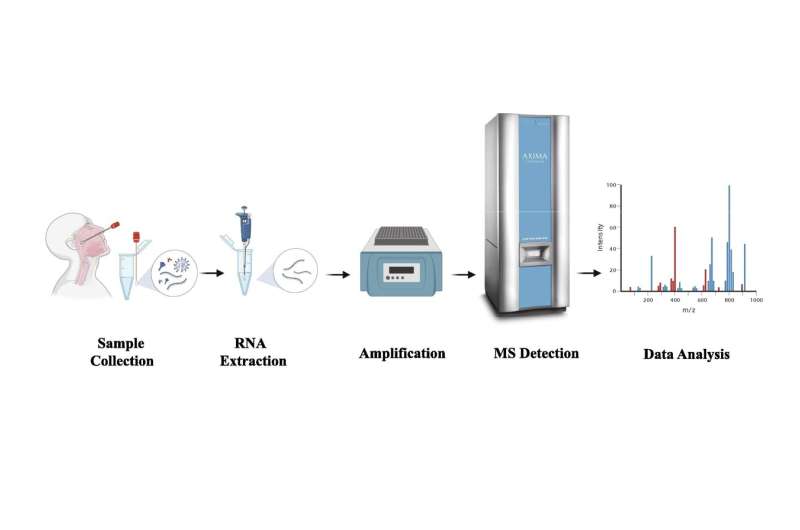Graphical abstract. Credit: Biosafety and Health (2023). DOI: 10.1016/j.bsheal.2023.02.003
The recent outbreak of the coronavirus disease 2019 (COVID-19) pandemic and the continuous evolution of the severe acute respiratory syndrome coronavirus 2 (SARS-CoV-2) have highlighted the significance of new detection methods for global monitoring and prevention. Although quantitative reverse transcription PCR (RT-qPCR), the current gold standard for diagnosis, performs excellently in genetic testing, its multiplexing capability is limited because of the signal crosstalk of various fluorophores.
The authors of an article published in Biosafety and Health present a highly efficient platform that combines 17-plex assays with matrix-assisted laser desorption/ionization time-of-flight mass spectrometry (MALDI-TOF MS), enabling the targeting of 14 different mutation sites of the spike gene.
Diagnosis using a set of 324 nasopharyngeal swabs or sputum clinical samples with SARS-CoV-2 MS method was identical to that with the RT-qPCR. The detection consistency of mutation sites was 97.9% (47/48) compared to Sanger sequencing without cross-reaction with other respiratory-related pathogens. Therefore, the MS method is highly potent to track and assess SARS-CoV-2 changes in a timely manner, thereby aiding the continuous response to viral variation and prevention of further transmission.
More information: Ziyuan Zhao et al, A multiplex method for detection of SARS-CoV-2 variants Based on MALDI-TOF mass spectrometry, Biosafety and Health (2023). DOI: 10.1016/j.bsheal.2023.02.003
Provided by Compuscript Ltd
























